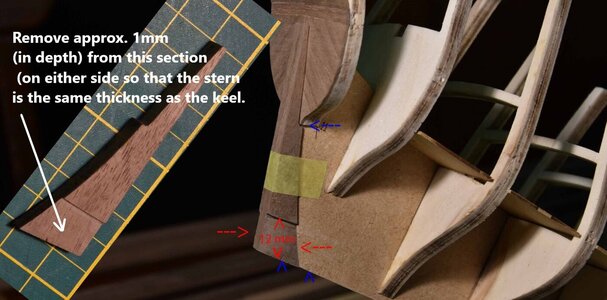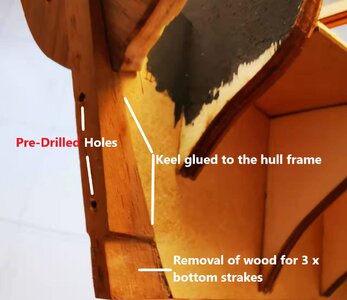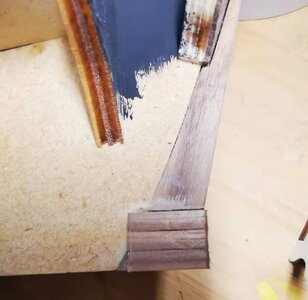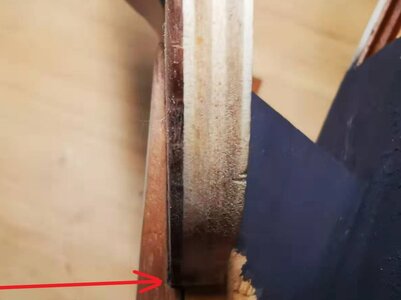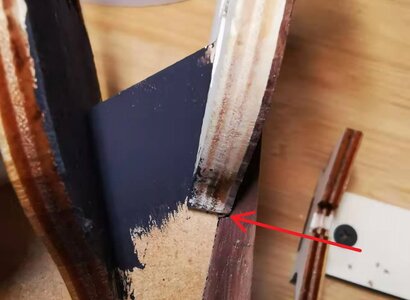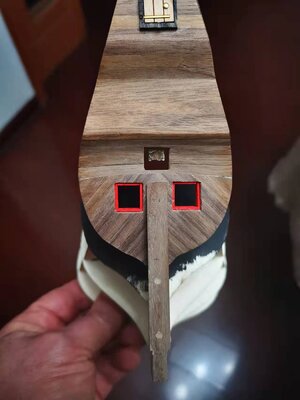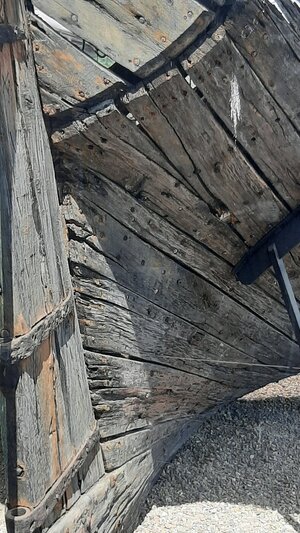Good morning / afternoon everyone!

What a wonderful response to the Willem Barentsz build log yesterday – just incredible – THANK YOU ALL!
Back at the building board sees the focus on the keel – and more in particular – on the stern part of the keel assembly. Many builders place this after the hull fairing has been done, but I chose otherwise and I will tell you why. As things now stand, the stern assembly (Frame #11) and associated parts only fit onto a half slot (indicated by the yellow arrow).

Photograph:
@pietsan Piet Sanders
Since hull fairing takes place from the bow towards the stern and consists of a motion whereby you are constantly pushing against the bulkhead from the front, I was just not comfortable with this. I would have been much happier with the stern keel locking Frame #11 also from the back. In all honesty – my concern is probably completely unfounded, but that’s just me.
The keel assembly consists of four parts which are presented in a beautiful walnut sheet – 7mm thick.
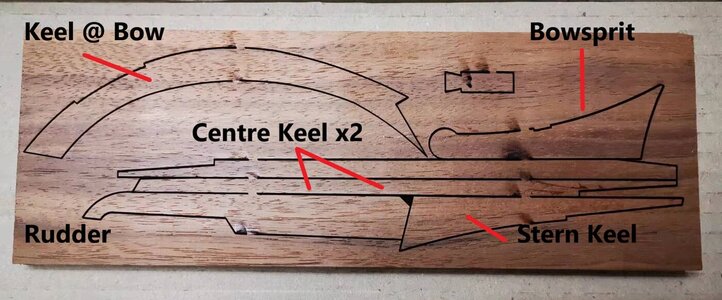
Apart from the keel components, the sheet also contains the rudder, beakhead (not bowsprit like I put in the description) and a “Knecht” – no idea what that is in English.
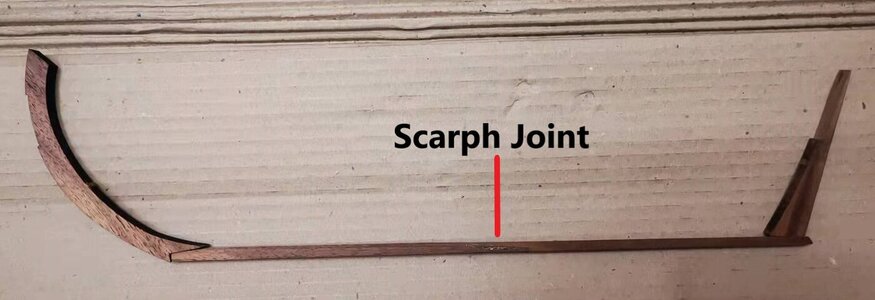
Here you can the see the keel assembly just placed in position. The centre keel at the bottom actually consists of two parts which are connected via a scarph joint.
However, before we can just slap on the stern keel onto the frame, there is something to keep in mind when building a Dutch ship.
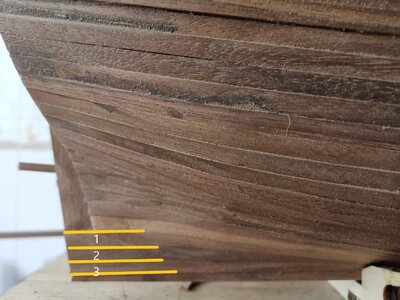
When it comes to the planking, three strakes at the bottom do not stop dead against the stern keel, but actually continue right to the outer edge of the stern. This includes the garboard strake – the lowest strake right at the bottom which butts up against the centre keel - and the two strakes directly above it.
That means that the stern part of the keel needs to receive special attention. These two brilliant photographs by
@pietsan Piet Sanders explains perfectly what needs to happen – far better than what I can attempt to describe.
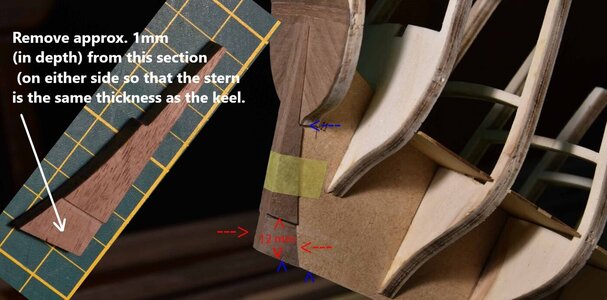
Just look at the perfection of Piet’s work - the sharpness of his filing line, how smoothly the reworked section is finished and the perfect fit of the stern piece onto onto the face of Frame #11.
So that is the theory – now it's up to yours truly to go and do it!
Until a little later!

Stern keel first tomorrow morning. I need daylight for that.





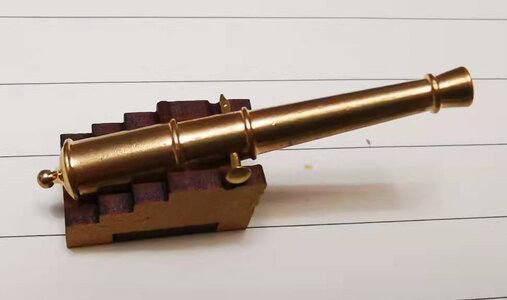






 In Kommetjie doing the art thing with the admiral. My shipyard is calling
In Kommetjie doing the art thing with the admiral. My shipyard is calling